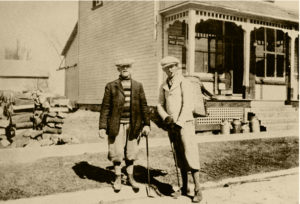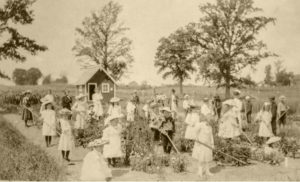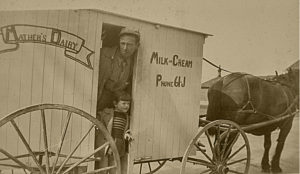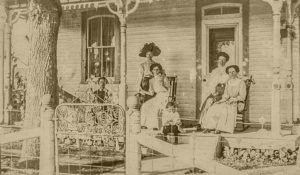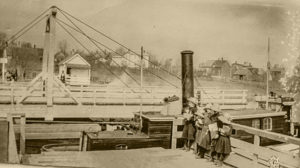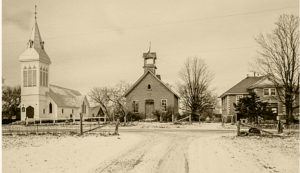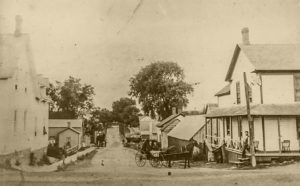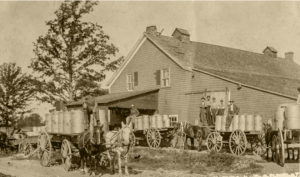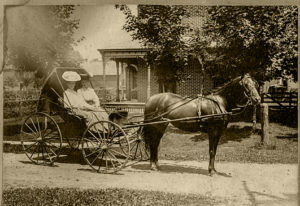About Rideau Township
This page provides a short history of the former Rideau Township and its principal communities. Additional information is available by clicking the "Communities" tab in the menu at the top of this page.
Formation
The Townships of Marlborough and North Gower, surveyed in 1791 and 1793 respectively are linked in their proud history. The economy of both townships was built on timber, then timber and agriculture, and finally on agriculture and services.
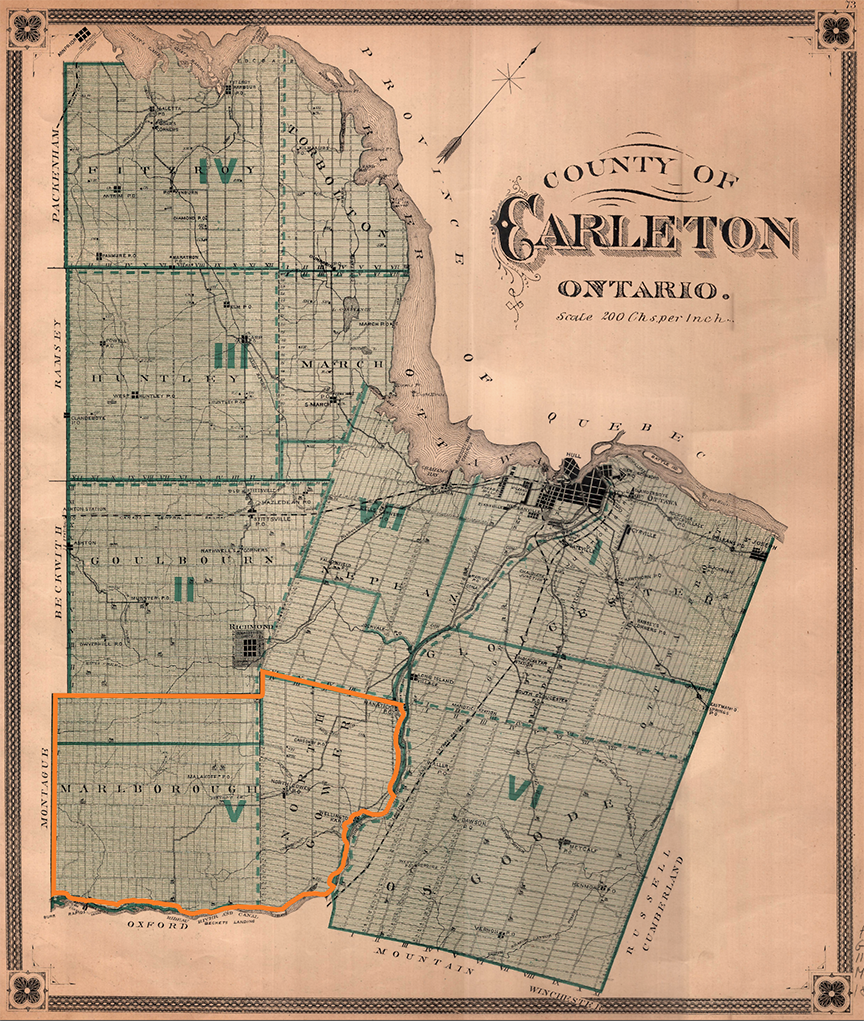
A natural starting point for our journey through the history of Marlborough and North Gower Townships is the hamlet of Burritts Rapids on the Rideau river. The reason for doing so is because Burritts Rapids was the portal through which most settlers passed en route to taking up land in Marlborough Township, and where they returned for goods and services.
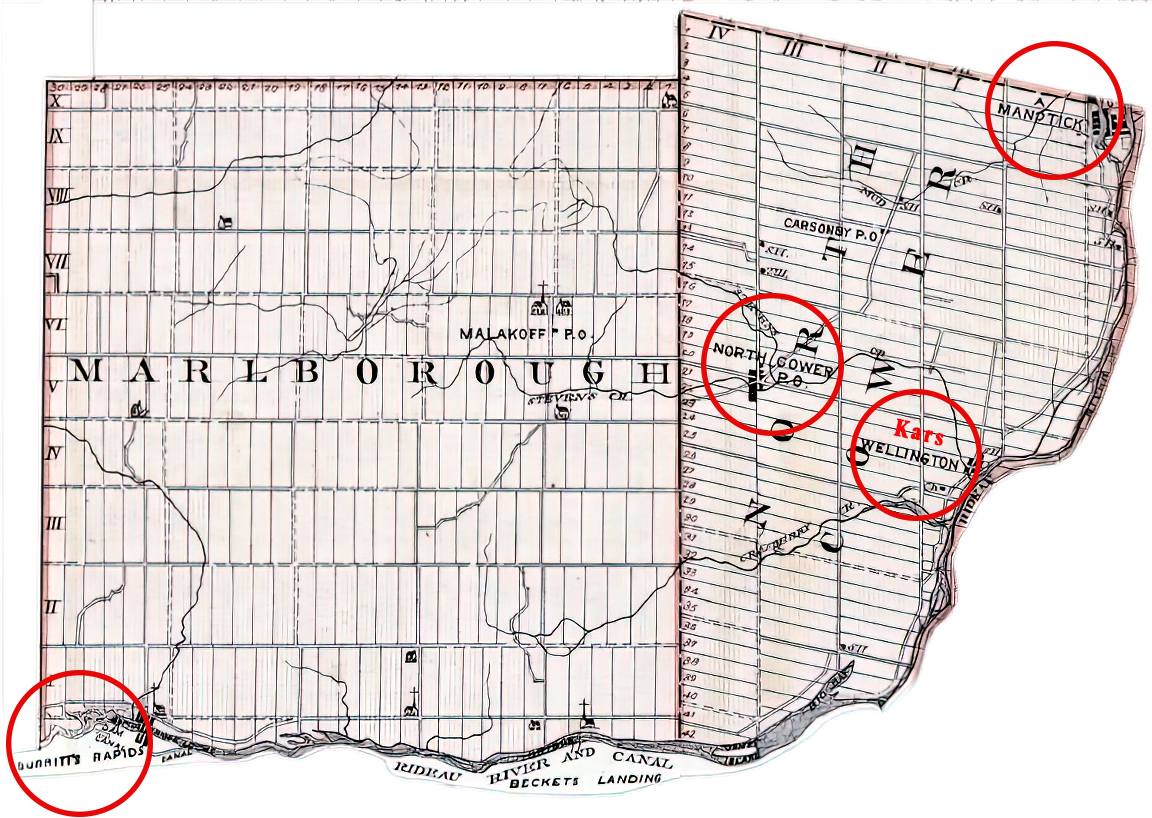
Burritts Rapids: Portal to Marlborough Township
Burritts Rapids was initially settled by Steven and Daniel Burritt and their families in 1793. It would grow into a thriving, self-contained community with a grist mill, sawmill, woolen mill, tannery, cheese factory, and brewery. It developed on an island in the Rideau River, where rapids were harnessed for waterpower. Its development was enhanced in 1827-1831 with the opening of the Rideau Canal.
One of the heritage jewels in Burritts Rapids is the Anglican church, better known as “Christ Church,” which was built on the north side of the river between 1828 and 1832. It is one of the oldest, if not the oldest church in the greater Ottawa area. Its interior is stunningly beautiful. Visit Christ Church on your next visit to Burritts Rapids.
Today, Burritts Rapids is a pleasant, tranquil, residential village containing many historic buildings. Its commercial decline paralleled the decline of commercial traffic on the Rideau Canal, and the growing use of the automobile. You can find a walking tour route map here.
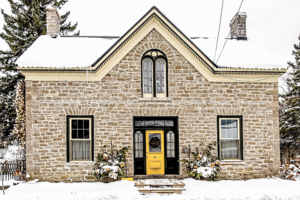
Heritage Home
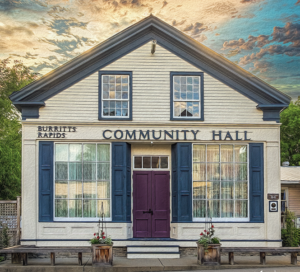
Community Hall
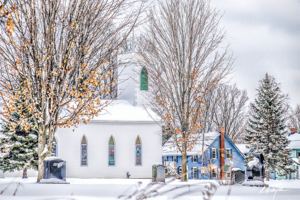
Heritage Church & Home
Timber
Much of the early activity in both townships focused on the timber trade. The Burritt Brothers built a sawmill in Burritts Rapids around 1800. Later a water driven mill was built in the Village of North Gower (1843,) a steam mill was built in Wellington (now Kars) (1852), and another on Kemptville Creek on the south side of the river. These were all relatively small mills. The first large capacity mill was not built until 1860 in Manotick. Thus much of the timber must have been sold as round or square logs and floated down the Rideau, either in rafts, or later on barges.
The early arrivals in the townships were lumbermen, entrepreneurs, and farmers. They must have found the forest areas they entered both spectacular and daunting. Hugh trees dominated by pine, hemlock, birch, maple, ash and elm covered the area.
Agriculture
The early farmers were engaged in what might be called subsistence farming. Most would have one to three milk cows, one to three horses or oxen, small flocks of sheep and hens, and a few geese. They made maple syrup, cut logs and firewood, bartered and exchanged labour, grew hay and wheat, and provided supplies for the lumber shanties. Clearing land was ongoing. Settlers, probably with the help of neighbours would burn the waste wood, and convert the ashes into potash, an early cash crop. From these humble beginnings the agriculture industry grew, enhanced by the construction of cheese factories, the construction of better roads and the availability of reliable trucks to deliver farm products, in particular fluid milk to the urban market in Ottawa, and grains to the St Lawrence river. Marketing boards brought stability to the dairy industry in the 1960's.
Today the agriculture industry is diversified and thriving. Production is at or near all-time highs. Dairy herds are stabled in comfortable, well ventilated, free stall barns, milked by robots. Improvements to soil drainage and plant genetics, precision planting, proper nutrition and weed control have made attainable 60 bushel per acre yields for soybeans and 200 bushels for corn. Every available acre is under cultivation. Numerous riding stables exist in the area, Horses and riders undergo training, generally in indoor riding arenas. Riding for pleasure is common. Four to six large market garden farms are interspersed with the dairy and grain producers. These fruit and vegetable growers market at the farm gate, at farm markets, and at local restaurants and grocery stores. Some use migrant labour.
Governance
As mentioned, the townships of Marlborough and North Gower were surveyed in 1791 and 1793. Early governance was part of a district system headquartered in Brockville. It was distant, and not very democratic or responsive. Transportation links to Brockville were limited
An era of new governance began in 1850 following the passage of the Municipal Corporation Act, also known as the Baldwin Act in 1849. It was Upper Canada’s first municipal statute and made municipal government in Canada a truly democratic institution. It provided for direct election, the ability to levy taxes, build roads, control the sale of alcohol, appoint constables, and support the poor. It created counties and townships, and allowed each township to elect five councillors annually. This system of municipal government would continue, with modification, to the present.
Communities
We earlier examined the history of Burritts Rapids. The villages of North Gower and Kars had similar histories. They were self-contained, providing an array of goods and services to the rural areas around them.
North Gower
North Gower developed where an early road or trail connecting Ottawa and Merrickville crossed Stevens Creek. While the first settlers on the site of North Gower were predominantly United Empire Loyalists, subsequent immigrants arrived from Ireland, Scotland and England.
The early settlers in the area made at least part of their living cutting timber for the British trade. The timber was floated down Stevens Creek to the Rideau River, and then on to Montreal or Quebec City. The last log drive down Stevens Creek took place in 1876.
The first industry in the village was a sawmill operated by waterpower. The dam and mill pond were between the bridge on Church Street and the Fourth Line Road. Light industry included the usual trades for the area and time. There were coopers, blacksmiths, pump makers, wheelwrights, harness makers, shoemakers, tailors, dressmakers and milliners.
A stagecoach service was started between the village and the railway station in Osgoode following the construction of the Lorne Bridge over the Rideau River at Kars in 1877. This provided daily mail service and easy access to Ottawa and Kemptville for social , business, and medical services.
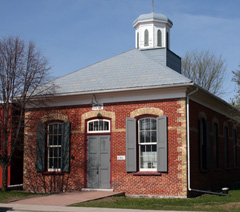
Former Township Office
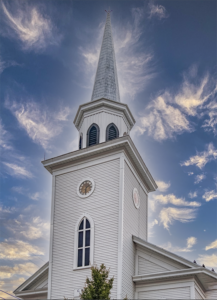
North Gower United
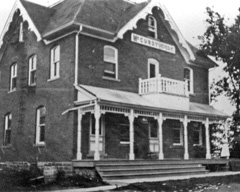
McCurdy House
Kars
Kars developed where Stevens Creek emptied into the Rideau River. While the date of the founding of Kars is not reliably known, there is some indication that settlement had begun on the river at Stevens Creek about 1820. In 1829 James Lindsay arrived and built a wharf. The building of the Rideau Canal, which opened in 1832 gave a boost to commerce in the area, as it did for Burritt’s Rapids.
Early industry in the Kars area consisted of lumbering, mixed farming, and cheese making. The wharf, the Rideau Canal, and the steamboats provided the transportation link needed for these industries to prosper. The wharf was used regularly by people living 15 to 20 km to the west of the river.
The village was first called Wellington, but as this name conflicted with another town in Ontario, Wellington was renamed Kars in 1856 after Kars, Turkey, where the British prevailed against the Russians in the Crimean War in 1855.
The Lorne Bridge was built over the Rideau River in Kars in 1877. The bridge stimulated the economy and educational opportunities. It connected the Village with the railway station in Osgoode. It also resulted in a Union School being built in Kars supported by North Gower and Osgoode Townships. This Union School included a continuation (high) school.
Kars and North Gower, like Burritts Rapids are now comfortable, convenient, sought after residential villages.

Kars United

Heritage Home
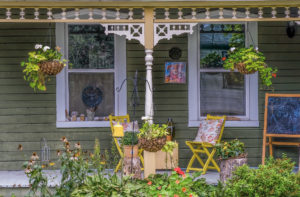
Front Porch
Manotick
Manotick would develop much later than the above villages. In 1858 Moss Kent Dickinson and Joseph Currier partnered to purchase the water rights at a new control dam on the west side of Long Island, an island in the Rideau River; there they built a milling complex powered by water turbines. They bought logs, wheat, and wool, and sold flour, sawn lumber, shingles, yarn and woven products. Their grist mill had the capacity to produce 100 barrels of flour per day, and their sawmill to produce two million board feet of lumber per year. Both were high-capacity mills.
The mill employees needed housing, goods and services. The village which grew around the milling complex to provide these services would become the village of Manotick. The milling complex, while still operating for demonstration purposes, has not been in commercial operation for many years. Manotick has continued to grow as a service centre, and has become one of the most sought after residential destinations in the greater Ottawa area.
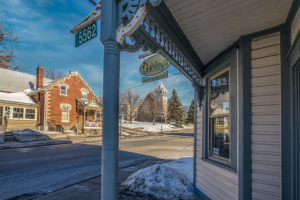
Heritage on Manotick Main
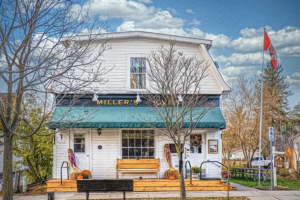
Miller's Oven Restaurant
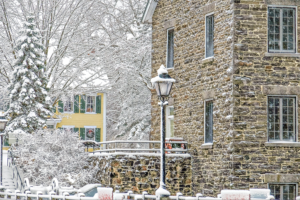
Dickinson Square
Amalgamation
In 1973 the Province of Ontario amalgamated the Townships of North Gower and Marlborough, and those parts of the Townships of Gloucester and Osgoode that governed Long Island, and that part of Nepean Township known as Nicholls Island into a new Township known as Rideau Township.
The background for amalgamation had several components, including:
- The Township of Marlborough did not have the tax assessment to offer its residents amenities such as fire protection, recreation facilities, and libraries. They basically operated a three-man road department.
- Manotick was governed by four municipalities, none of whom wanted to invest in amenities and infrastructure in the very corner of their jurisdiction. Manotick suffered from this reality for much of its history. For instance, Manotick did not have a public school in its early years. It was not until 1872 when the four municipalities agreed to build a “Union School”.
Residents developed considerable pride in the new Rideau township and valued the amenities provided by its enhanced tax base. Its life, however, was short. In 2001 it was incorporated into the City of Ottawa. These governance changes only enhanced the history of Marlborough and North Gower Townships.
William Tupper
Acknowledgement: The Rideau Township Historical Society recognizes that the land that comprises the former Rideau Township is located within the unceded traditional territory of the Algonquin Anishnaabeg People. We gratefully acknowledge their stewardship of the lands in the watershed of the Ottawa Valley and its tributaries.

